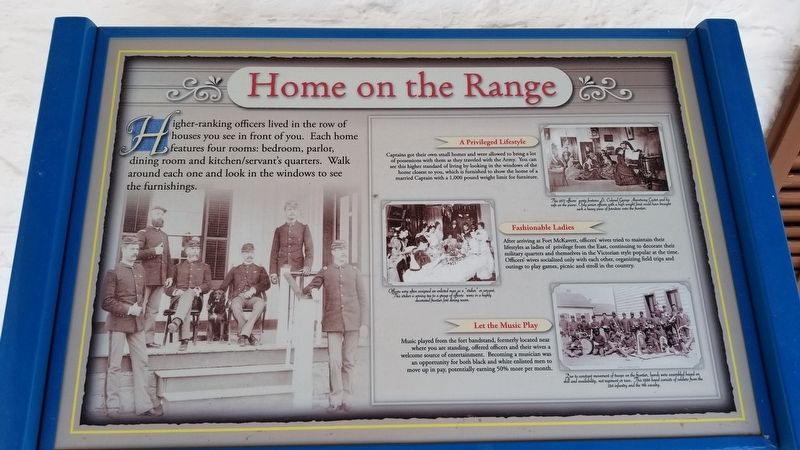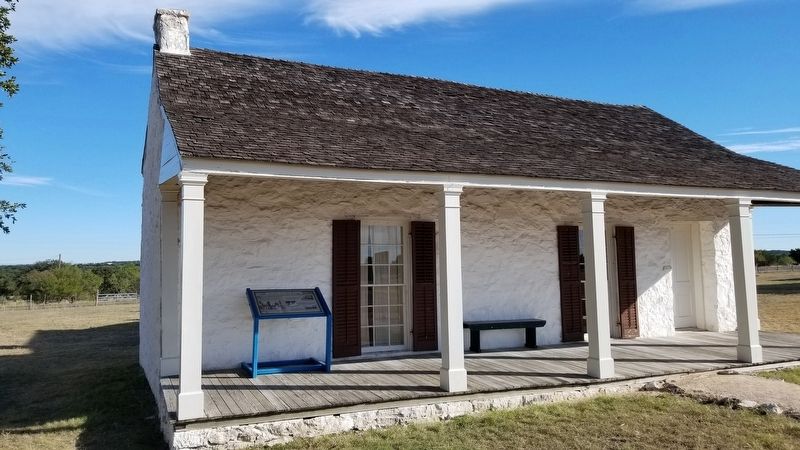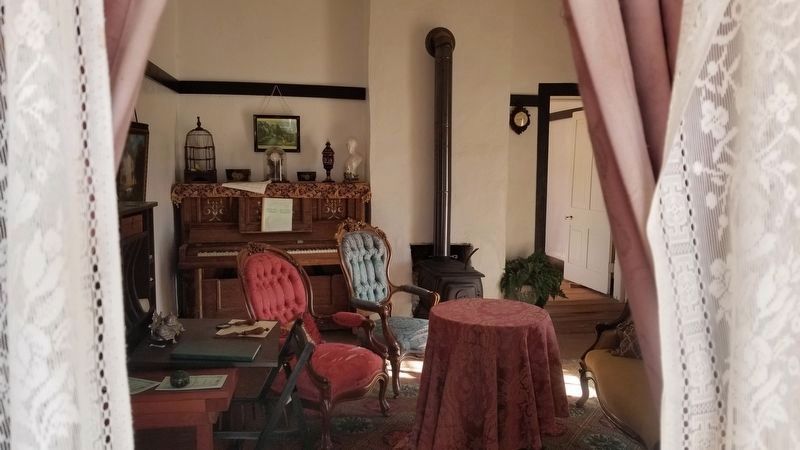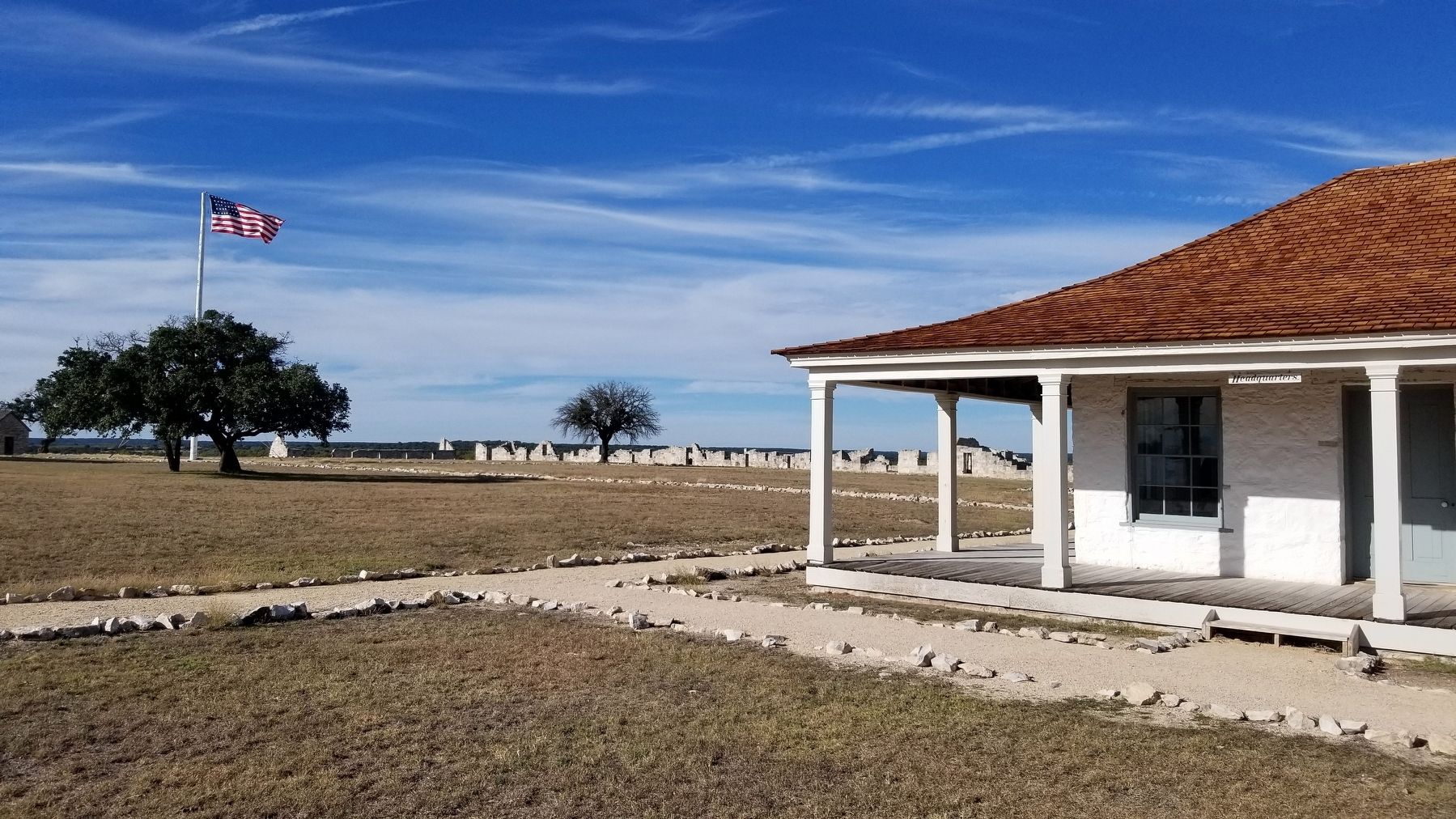Fort McKavett in Menard County, Texas — The American South (West South Central)
Home on the Range
Higher-ranking officers lived in the row of houses you see in front of you. Each home features four rooms: bedroom, parlor, dining room and kitchen/servant's quarters. Walk around each one and look in the windows to see the furnishings.
Fashionable Ladies
After arriving at Fort McKavett, officers' wives tried to maintain their lifestyles as ladies of privilege from the East, continuing to decorate their military quarters and themselves in the Victorian style popular at the time. Officers' wives socialized only with each other, organizing field trips and outings to play games, picnic and stroll in the country.
A Privileged Lifestyle
Captains got their own small homes and were allowed to bring a lot of possessions with them as they traveled with the Army. You can see this higher standard of living by looking in the windows of the home closest to you, which is furnished to show the home of a married Captain with a 1,000 pound weight limit for furniture.
Let the Music Play
Music played from the fort bandstand, formerly located near where you are standing, offered officers and their wives a welcome source of entertainment. Becoming a musician was an opportunity for both black and white enlisted men to move up in pay, potentially earning 50% more per month.
Captions
This 1873 officers' party features Lt. Colonel George Armstrong Custer and his wife on the piano. Only senior officers with a high weight limit could have brought such a heavy piece of furniture onto the frontier.
Officers were often assigned an enlisted man as a striker" or servant. or This striker is serving tea to a group of officers' wives in a highly decorated frontier fort dining room.
Due to constant movement of troops on the frontier, bands were assembled based on skill and availability, not regiment or race. This 1886 band consists of soldiers from the 21st infantry and the 9th cavalry.
Erected by Fort McKavett State Historical Park.
Topics. This historical marker is listed in these topic lists: Forts and Castles • Women. A significant historical year for this entry is 1873.
Location. 30° 49.566′ N, 100° 6.444′ W. Marker is in Fort McKavett, Texas, in Menard County. Marker can be reached from the intersection of Farm to Market Road 864 and Ranch to Market Road 1674. The marker is located in the eastern section of the Fort McKavett State Historical Park. Touch for map. Marker is at or near this postal address: 7066 FM 864, Fort Mc Kavett TX 76841, United States of America. Touch for directions.
Other nearby markers. At least 5 other markers are within 2 miles of this marker, measured as the crow flies. Cramped Quarters (within shouting
distance of this marker); The Enlisted Men (about 500 feet away, measured in a direct line); Buffalo Soldiers at Fort McKavett (about 600 feet away); Site of Fort McKavett (approx. ¼ mile away); Colonel Black Ranch House (approx. 1½ miles away).
Also see . . . Fort McKavett.
Fort McKavett, twenty-two miles southwest of Menard in southwestern Menard County, was established by the United States War Department as Camp San Saba (not to be confused with Camp San Saba in McCulloch County) in March 1852. The camp covered about 2,373 acres near the right bank of the San Saba River. Several infantry companies were stationed there in an effort to protect frontier settlers from Comanche Indians. The post was abandoned in March 1859 but reoccupied in April 1868 under the name Fort McKavett. The new name was probably chosen in honor of Capt. Henry McKavett, who was killed in the battle of Monterrey in 1846. Source: The Handbook of Texas(Submitted on June 25, 2021, by James Hulse of Medina, Texas.)
Credits. This page was last revised on June 26, 2021. It was originally submitted on June 24, 2021, by James Hulse of Medina, Texas. This page has been viewed 180 times since then and 18 times this year. Photos: 1, 2, 3, 4, 5. submitted on June 25, 2021, by James Hulse of Medina, Texas.




